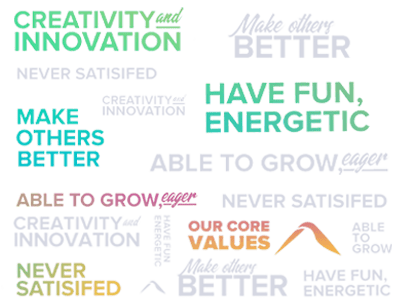Introduction
Today’s digital world attracts exceptional opportunities and challenges in providing excellent customer experiences (CX). With rapid technological advancements, customers expect outstanding services, along with personalized and empathetic experiences. This shift from traditional to new approaches is classified as CX 2.0, including data-driven analytics, hyper-personalization, and omnichannel strategies.
This blog provides an understanding of CX, its evolution, and data insights. It also includes some of the key trends to shape the future of CX, displaying a shift to the new world.
Understanding Customer Experience
2.1. What is CX?
CX refers to the overall impression and feelings a customer has about their interactions with a company or brand across all touchpoints and throughout the customer journey. Moreover, CX aims to promote positive customer support services and enhance customer satisfaction.
It encompasses every aspect of a company’s offerings, including the quality of customer service, the ease of use of products or services, the efficiency of processes, and the emotional connection customers feel towards the brand. The ultimate goal of CX is to create positive and memorable experiences that drive customer satisfaction and loyalty.
2.2. The Evolution of CX
In the traditional approach, CX involved handling the customers’ queries and resolving them. CX 2.0 is a hybrid approach that focuses on offering personalized experiences, along with empathetic engagement across multiple channels.
This new approach has replaced the traditional business approaches with digitalization to reflect on the rise of customer expectations and sustain their place in the competitive market.

Insights:
84% of the organizations state that they prioritize customer experience to overtake their competition.
88% of the customers believe that a good customer experience leads them to purchase again.
3. Key Trends in CX 2.0
In the competitive market, there are various factors at play, involving new technologies, evolving customer expectations, and new market trends. We’ve listed some of the key trends to highlight the CX future:
1. Emotional Intelligence in CX
Being emotionally connected with customers makes them feel understood and valued. This fosters long-term relationships with the customers and promotes their loyalty. In CX 2.0, businesses focus on promoting empathetic interactions and immersive CX to develop emotional bonds. Empathetic interactions can minimize tense situations, avoid customers’ complaints, and create new opportunities.
Two-thirds of the customers stay loyal to a company that is concerned about their mental state.””

2. Artificial Intelligence (AI) and Automation
AI and automation are transforming CX services. In this technologically advanced business world, AI-powered chatbots and virtual assistants provide instant support, answer queries, and even predict customer needs, whereas machine learning (ML) algorithms analyze customer behavior to offer personalized recommendations and proactive solutions.
As per Zendesk, about 64% of the leaders believe that investing in customer service AI can improve the performance.
Apart from these technologies, automation streamlines routine and mundane tasks, providing appropriate time to focus on complex and value-added interactions, thereby enhancing overall CX.

3. Omnichannel Engagement
Omnichannel engagement serves as a foundation of CX management services. Nowadays, businesses establish multiple channels to allow the customers to interact with the agents. With the implementation of advanced analytics and data platforms, businesses can provide personalized experiences based on the unified customers’ profiles. It is essential that organizations understand the significance of seamless integration amongst multiple channels.
As per Salesforce, 71% of the customers want multiple channels to establish convenient interaction.”

4. Personalization 2.0
It is well established that customers prefer personalized experiences; however, in CX 2.0, it takes such experiences to the next level. Digitalization has also influenced CX with the implementation of AI and machine learning (ML). Personalization 2.0 uses AI and ML to evaluate the real-time customer’s data, predict the customer’s behavior, and adopt personalized approaches.
Personalization 2.0 also includes new tools and technologies like AI and virtual and augmented reality (VR/AR) to change the ways customers interact.

“According to Zendesk, personalization is expected by 76% of the customers.”
5. Metaverse CX
Metaverse is a three-dimensional virtual area that has transformed agent-customer interactions to deliver outstanding customer services. This virtual world has personalized characters with virtual stores to promote gamification and enhance personalization. The metaverse can be integrated with VR/AR, AI, blockchain, and non-fungible tokens. This futuristic approach will redefine customer experience and interactions to ensure superior services.
6. Customer Journey Mapping 2.0
Customer journey mapping involves visualizing and analyzing every touchpoint a customer has with a brand. However, customer journey mapping 2.0 represents a significant leap in understanding and optimizing CX. AI, ML, and data analytics can create dynamic, personalized, and predictive journey maps to drive better outcomes. It includes advanced methods like micro-journey mapping, journey orchestration, and predictive analytics to positively shape the customer journey.

7. CX Metrics and ROIs
CX is a crucial differentiator in the customer support services to measure various performance metrics. These metrics provide insight on the company’s efficiency and highlight the improvement areas. Some of the metrics that businesses measure are:
- Customer Lifetime Value (CLV): This metric quantifies the long-term value a customer brings, reflecting the impact of positive experiences on revenue.
- Customer Satisfaction (CSAT): It assesses how satisfied customers are with a specific interaction or service.
- Churn Rate: It tracks customer retention, as improving customer experience can lower churn and reduce acquisition costs.
- Net Promoter Score (NPS):This metric measures customer loyalty and likelihood to recommend the brand, offering a direct link to growth potential.
- Customer Effort Score (CES):It evaluates how easy it is for customers to resolve issues, with lower effort translating to higher satisfaction.
Improving these metrics leads to better retention, increased sales, and reduced costs, demonstrating the positive ROI of strong CX initiatives.
Good to Know Facts:
- 28% of consumers state that hard-to-find information is frustrating.
- 82% of customers use knowledge bases, whereas only 66% of customer support teams use knowledge bases.
The Role of CX Management Outsourcing
In customer support services, businesses aim to make their CX game strong and deliver excellent experiences. For this, many businesses outsource their CX management to provide specialized services. There are various benefits of outsourcing CX management, including cost savings, specialized operations, and advanced technologies. Businesses appoint numerous service providers and get improved outcomes without investing within the house.
Outsourcing CX management promotes optimum utilization of resources along with getting desired results and delivering top-notch customer experiences.
At Bill Gosling Outsourcing, we provide a variety of customer experience services to improve customer interactions. We provide support via chat, voice calling, email, SMS, and more.
Conclusion
Customer experience is reshaping the way businesses interact with their customers in a digital world. With evolving customer expectations and emerging new technologies, it is essential that businesses focus on providing enhanced customer experiences. Moreover, businesses must follow new market trends, including omnichannel engagement, personalized experience, empathetic interactions, and customer journey mapping.
To drive business growth and success, organizations can outsource their CX management. Moreover, it is significant that businesses are consistent with the new CX 2.0 approach to stay ahead of their competitors.




